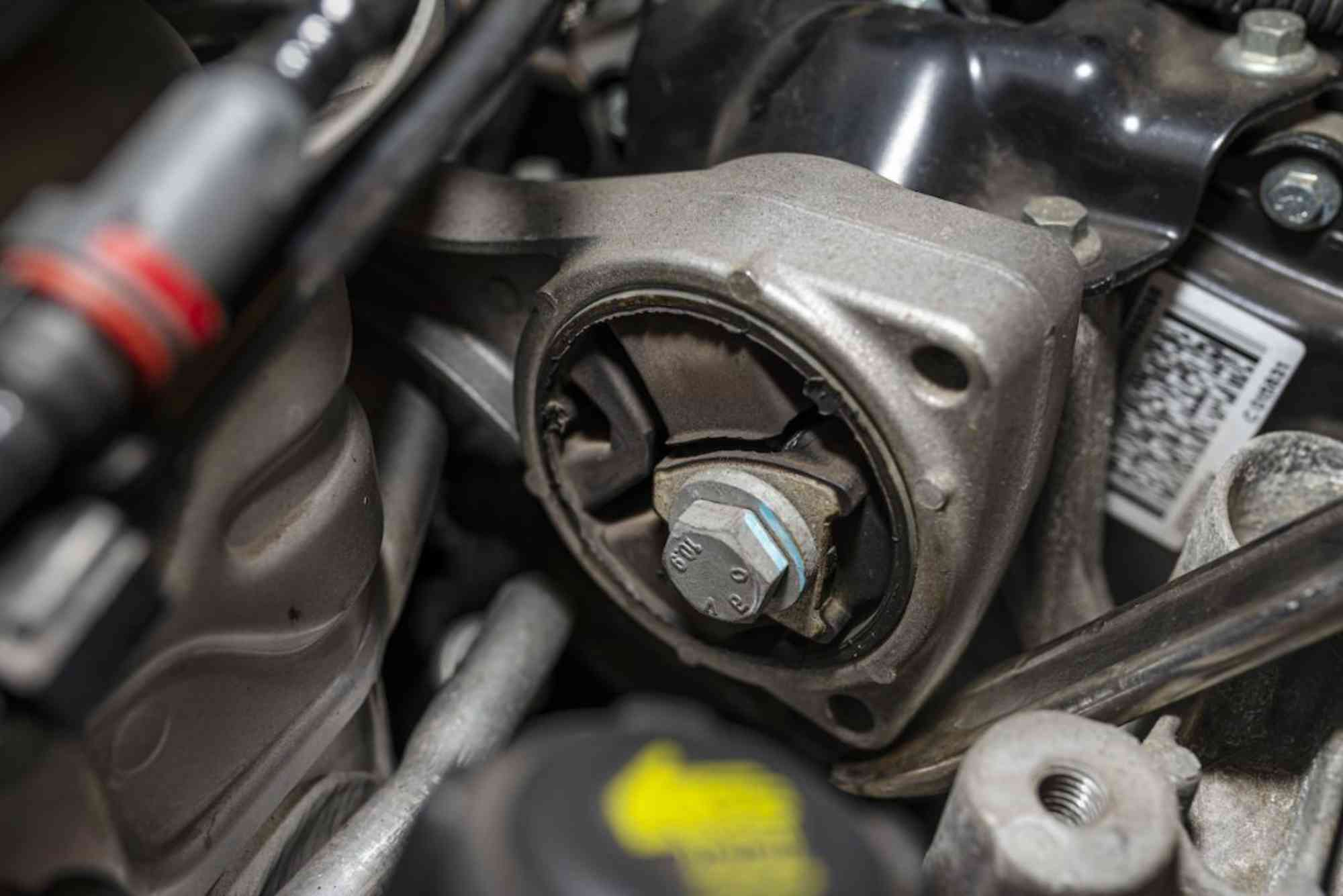Introduction
When your car starts shaking at idle, you may immediately think of spark plugs, fuel issues, or even transmission problems. But one overlooked culprit is the engine mount. Many drivers ask, can bad engine mounts cause rough idle? The answer is yes, and understanding how is essential for solving the problem quickly and avoiding costly damage. Engine mounts do more than simply hold your engine in place. They absorb vibration, reduce noise, and keep the engine aligned with the transmission. When they wear out or break, the consequences can show up as rough idle, excessive shaking, or even clunking sounds. In this guide, we’ll dive into why engine mounts matter, how they can lead to rough idle, and what you can do about it.
What Engine Mounts Do in Your Vehicle
Every car engine generates significant vibration when it runs. Engine mounts, typically made of rubber and metal, act as cushions between the engine and the chassis. They perform three key functions. First, they secure the engine firmly in place to prevent movement during acceleration, braking, and cornering. Second, they dampen vibrations so the driver feels a smooth ride rather than constant shaking. Third, they maintain proper alignment between the engine and transmission, ensuring power is delivered efficiently.
Over time, engine mounts endure heat, pressure, and stress. Rubber components can crack or deteriorate, while hydraulic mounts can leak fluid. Once this happens, the mount loses its ability to absorb vibrations, allowing them to travel directly into the cabin.
Can Bad Engine Mounts Cause Rough Idle?
Yes, bad engine mounts can cause rough idle. When a mount fails, the vibrations from the engine are no longer contained. Instead of being absorbed, they pass directly into the frame of the car, making the steering wheel, dashboard, and even the seats shake when the engine is running but the vehicle is stationary. This can mimic the symptoms of other issues, such as ignition problems or fuel delivery issues, which often confuses drivers. The difference is that engine mounts don’t affect combustion or fuel flow. They simply fail to isolate the natural vibrations produced by the engine.
Symptoms of Bad Engine Mounts That Cause Rough Idle
When you’re troubleshooting rough idle, knowing the specific signs of bad engine mounts can save you time and money. One common sign is noticeable vibration when the car is idling at stoplights or in park. The shaking often lessens once the vehicle is moving, since the momentum masks the vibrations. Another sign is clunking or knocking sounds when shifting from drive to reverse, as the engine shifts position due to weak support. Drivers may also notice excessive engine movement under the hood, especially when revving or accelerating. In some cases, rough idle caused by bad mounts is accompanied by increased noise, including humming or rattling inside the cabin.
How to Diagnose Rough Idle from Engine Mount Issues
Diagnosing whether rough idle is caused by bad engine mounts requires a mix of observation and inspection. Begin by parking the car and letting it idle. If you feel strong vibrations through the steering wheel or floor, this is a red flag. Open the hood and observe the engine while someone shifts between park, reverse, and drive. Excessive engine movement indicates weak mounts. For a more detailed check, a mechanic can use a pry bar to gently test mount stability or inspect hydraulic mounts for fluid leaks. It’s important to rule out other causes like dirty fuel injectors, vacuum leaks, or worn spark plugs. If those components are in good condition but the shaking persists, faulty engine mounts are a likely cause.
Other Problems That Can Cause Rough Idle
While bad engine mounts are a valid cause of rough idle, they aren’t the only reason. Rough idle can also result from clogged air filters, malfunctioning idle control valves, dirty fuel injectors, or ignition system failures. For example, a misfiring cylinder will create imbalance that feels like vibration. Vacuum leaks allow unmetered air into the system, causing inconsistent combustion. Even something as simple as bad spark plugs can mimic the same shaking symptoms. This overlap is why many drivers confuse mount problems with engine performance issues. The distinction is that when engine performance is at fault, you usually see a drop in fuel efficiency, misfires, or difficulty accelerating. With bad mounts, the car drives normally but feels rough when idling.
Why Fixing Bad Engine Mounts Quickly Matters
Driving with bad engine mounts may seem like a minor nuisance, but it carries long-term risks. Loose mounts put additional strain on the exhaust system, radiator hoses, and electrical wiring due to excessive engine movement. Over time, this can lead to fluid leaks, broken connections, or even transmission misalignment. In severe cases, a completely broken mount may cause the engine to shift dangerously, creating safety hazards. Fixing mounts early not only restores smooth idle but also prevents secondary damage that could cost far more to repair.
Repairing and Replacing Engine Mounts
Once you confirm that engine mounts are the culprit behind rough idle, the solution is replacement. Engine mount replacement requires lifting the engine slightly to relieve pressure, then removing the worn mount and installing a new one. While experienced DIY mechanics can attempt this with proper equipment, most drivers rely on professional repair shops. The cost of replacing engine mounts varies depending on vehicle type and labor, typically ranging from $200 to $600 per mount. Some cars have three or four mounts, and replacing all may be necessary if multiple mounts show wear.
Preventing Engine Mount Problems
Although engine mounts inevitably wear out, you can extend their lifespan with proper care. Avoid aggressive driving habits that put unnecessary strain on the mounts. Address oil or coolant leaks promptly, since fluids accelerate rubber deterioration. During routine maintenance, ask your mechanic to inspect the mounts for cracks or leaks. Staying ahead of these issues ensures that when you wonder, can bad engine mounts cause rough idle, you’ll already have the answer and avoid unnecessary surprises.
FAQs
Can bad engine mounts cause engine misfire?
No, bad engine mounts do not cause misfire. Misfires are linked to ignition, fuel, or compression issues, but mounts can make misfires feel worse by amplifying vibrations.
How long do engine mounts usually last?
Engine mounts typically last between 60,000 and 100,000 miles, but lifespan varies with driving conditions, maintenance, and vehicle type.
Can I drive with bad engine mounts?
Yes, but it is not recommended. While your car may still run, prolonged driving with bad mounts risks damaging other components and reducing safety.
How can I tell if vibration is from mounts or the engine?
If the car drives smoothly at higher speeds but shakes at idle, mounts are likely the issue. Engine-related problems usually affect performance across all speeds.
Do all engine mounts fail at the same time?
Not always. One mount may wear out before the others, but it’s common for multiple mounts to degrade around the same time due to similar age and stress.
So, can bad engine mounts cause rough idle? Absolutely. They may not interfere with fuel or ignition systems, but they directly affect how the engine’s natural vibrations are felt inside the vehicle. Ignoring the signs not only makes driving uncomfortable but also risks long-term damage to your car. If you notice excessive vibration, clunking noises, or visible engine movement, it’s time to have your mounts inspected and replaced if needed. Restoring smooth idle is not just about comfort—it’s about protecting your investment.




